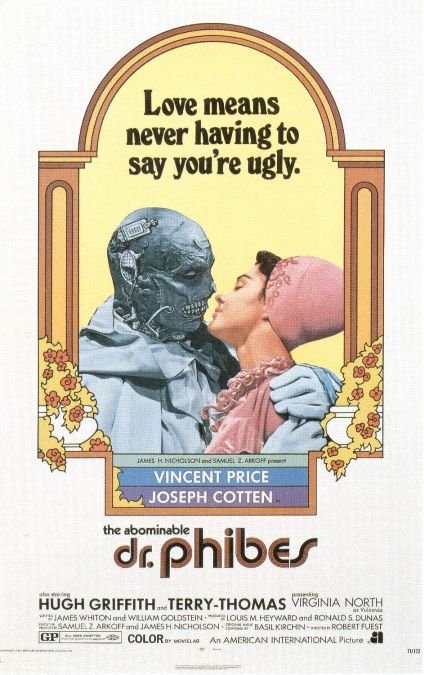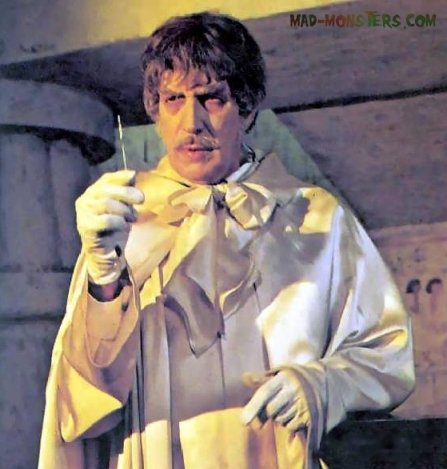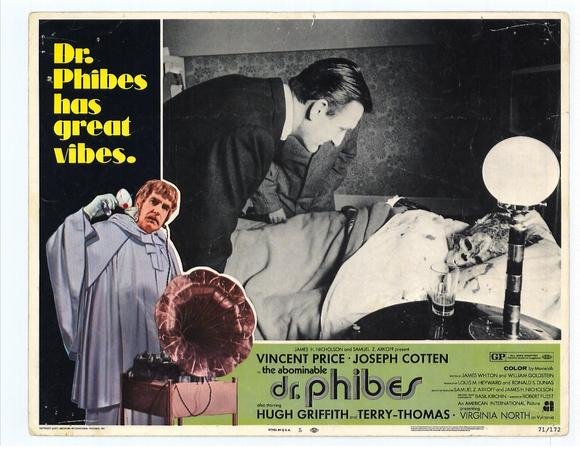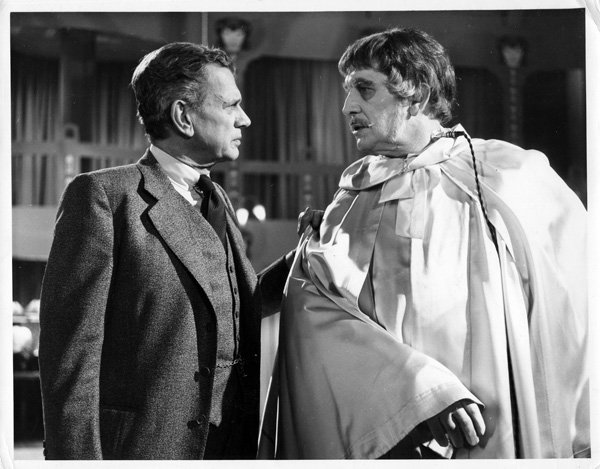THE ABOMINABLE DR. PHIBES: Vengeance And Horror Go Art-Deco
Ask any Vincent Price fan films for a list of their favorite Price films and chances are you will see The Abominable Dr. Phibes that list. This is no hype: indeed, this film ranks up there with Masque Of The Red Death and Theater Of Blood as one of his finest films. It's also a film with a truly unique sense of style in how it tells the story and how it deals with horror genre. The Abominable Dr. Phibes is set in the 1920's and begins as a string of unusual murders are underway. Inspector Trout (Peter Jeffrey) begins to investigate the odd killings and discovers that all the targets are medical professionals and they are being killed in the style of the nine curses that God visited upon the Egyptians in biblical times. As the corpses pile up, all roads seem to lead back to Dr. Phibes (Price), who apparently died in a car crash a while before the killings.H
The Abominable Dr. Phibes is set in the 1920's and begins as a string of unusual murders are underway. Inspector Trout (Peter Jeffrey) begins to investigate the odd killings and discovers that all the targets are medical professionals and they are being killed in the style of the nine curses that God visited upon the Egyptians in biblical times. As the corpses pile up, all roads seem to lead back to Dr. Phibes (Price), who apparently died in a car crash a while before the killings.H owever, the audience knows that Dr. Phibes is not quite dead and he has a unique, heartfelt reason for his reign of terror. Trout teams up with Dr. Vesalius (Joseph Cotten), a target on Phibes' list, to try and stop the campaign of slaughter. However, they quickly discover that Phibes is educated in a number of arcane sciences - and his knowledge makes him hard to stop.The Abominable Dr. Phibes manages to feel classical and modern all at once. The period details are impressive, particularly the stunning art-deco sets designed by Brian Eatwell (Dr. Phibes' mansion is the kind of place many horror fans would like to live). The basic story concept also has an antiquarian feel to it, often feeling like a feature film version of a penny dreadful or an old-time movie serial. The vintage effect is sealed by a score that includes several excellent big-band arrangements of variou
owever, the audience knows that Dr. Phibes is not quite dead and he has a unique, heartfelt reason for his reign of terror. Trout teams up with Dr. Vesalius (Joseph Cotten), a target on Phibes' list, to try and stop the campaign of slaughter. However, they quickly discover that Phibes is educated in a number of arcane sciences - and his knowledge makes him hard to stop.The Abominable Dr. Phibes manages to feel classical and modern all at once. The period details are impressive, particularly the stunning art-deco sets designed by Brian Eatwell (Dr. Phibes' mansion is the kind of place many horror fans would like to live). The basic story concept also has an antiquarian feel to it, often feeling like a feature film version of a penny dreadful or an old-time movie serial. The vintage effect is sealed by a score that includes several excellent big-band arrangements of variou s standards.However, it has a distinctly modern feel in how it handles what is ostensibly a horror film. The script fuses its horror elements with a pronounced sense of black comedy that Price would later pursue in Theater Of Blood and director Robert Fuest sets its horrors in gorgeous settings that give it a pop art sense of flair. That pop art feel is intensified by Fuest's habit of offsetting the killings with moments of offbeat, flamboyant beauty, like the scene where Phibes dances a tango with assistant Vulnavia (Victoria North) while a group of clockwork musicians play a tune for them.The Abo
s standards.However, it has a distinctly modern feel in how it handles what is ostensibly a horror film. The script fuses its horror elements with a pronounced sense of black comedy that Price would later pursue in Theater Of Blood and director Robert Fuest sets its horrors in gorgeous settings that give it a pop art sense of flair. That pop art feel is intensified by Fuest's habit of offsetting the killings with moments of offbeat, flamboyant beauty, like the scene where Phibes dances a tango with assistant Vulnavia (Victoria North) while a group of clockwork musicians play a tune for them.The Abo minable Dr. Phibes is also unique amongst Vincent Price films because it gives the actor one of his most unusual and challenging characters to play. Dr. Phibes has a frozen face and can only speak via a device plugged into his neck so Price can't use his expressive face or mellifluous voice as he normally does. He deals with these challenges by using his eyes and body movement to fill the facial/verbal void - the scenes of him playing a pipe organ and conducting a band for Vulnavia are a delight - and devises a mechanical, highly enunciated style of speech for the moments where he uses his amplification device. The end result is unmistakably his work and yet totally different from his other characters thank to the singular demands of th
minable Dr. Phibes is also unique amongst Vincent Price films because it gives the actor one of his most unusual and challenging characters to play. Dr. Phibes has a frozen face and can only speak via a device plugged into his neck so Price can't use his expressive face or mellifluous voice as he normally does. He deals with these challenges by using his eyes and body movement to fill the facial/verbal void - the scenes of him playing a pipe organ and conducting a band for Vulnavia are a delight - and devises a mechanical, highly enunciated style of speech for the moments where he uses his amplification device. The end result is unmistakably his work and yet totally different from his other characters thank to the singular demands of th e role.It's also worth noting that the backing cast is quite good, playing out the unusual story with a distinctly English style of dry wit. Jeffrey underplays his role quite well, bringing a befuddled charm to the character, and there are scene-stealing bits by Terry-Thomas as one of Phibes' victims and John Cater as Trout's perpetually exasperated superior officer. The best of the support performances comes from Cotten, who brings dignity to the role as he plays straight man to Phibes. Watching these two old-school pros square off against each other is a rare treat.In short, The Abominable Dr. Phibes is one of the must-sees in the Vincent Price filmography - and horror cinema in general - because it presents the viewer with a blend of horror elements, pop visual design and dark humor that is unlike anything else in the genre.
e role.It's also worth noting that the backing cast is quite good, playing out the unusual story with a distinctly English style of dry wit. Jeffrey underplays his role quite well, bringing a befuddled charm to the character, and there are scene-stealing bits by Terry-Thomas as one of Phibes' victims and John Cater as Trout's perpetually exasperated superior officer. The best of the support performances comes from Cotten, who brings dignity to the role as he plays straight man to Phibes. Watching these two old-school pros square off against each other is a rare treat.In short, The Abominable Dr. Phibes is one of the must-sees in the Vincent Price filmography - and horror cinema in general - because it presents the viewer with a blend of horror elements, pop visual design and dark humor that is unlike anything else in the genre.


